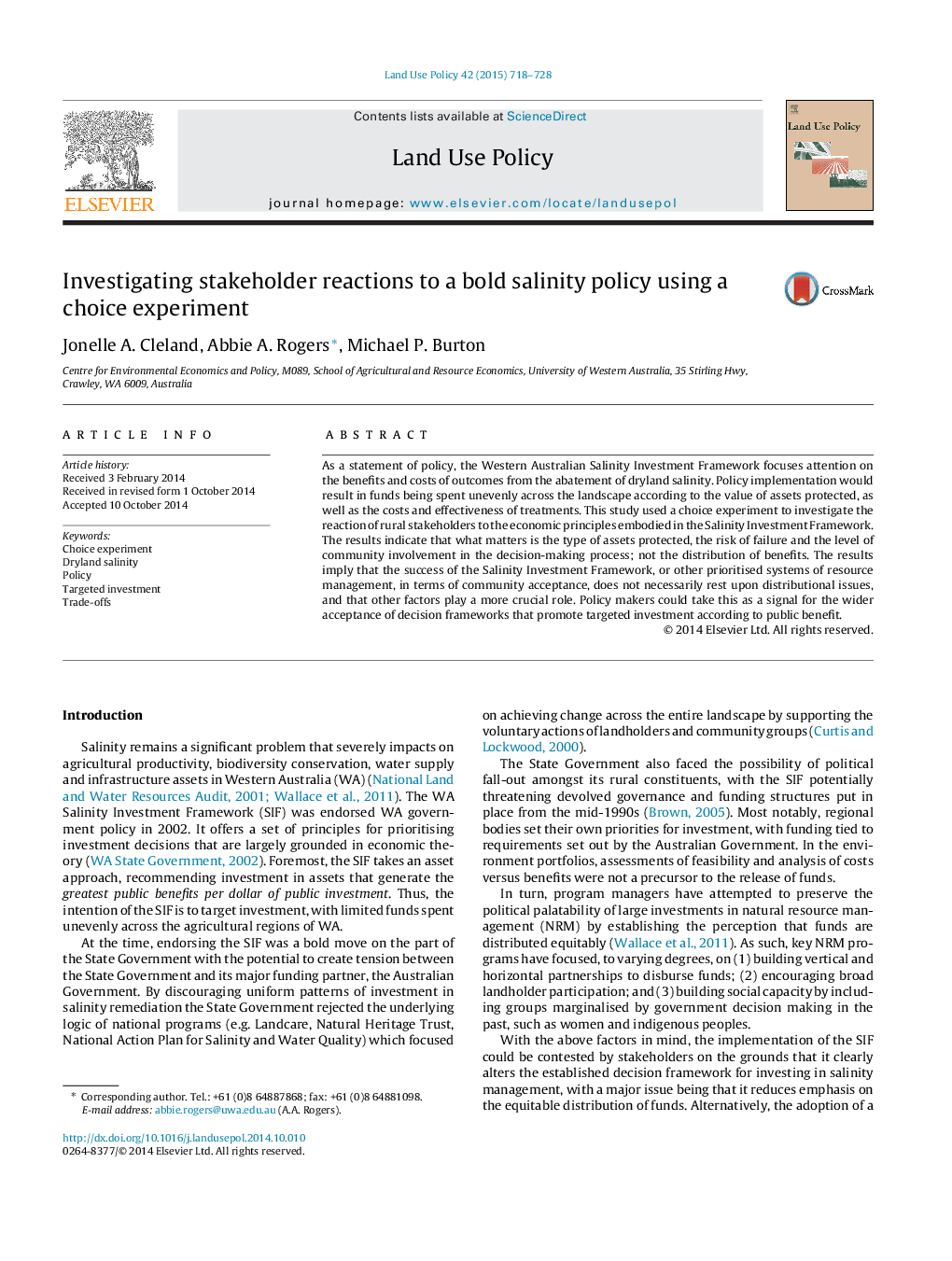| Article ID | Journal | Published Year | Pages | File Type |
|---|---|---|---|---|
| 6548513 | Land Use Policy | 2015 | 11 Pages |
Abstract
As a statement of policy, the Western Australian Salinity Investment Framework focuses attention on the benefits and costs of outcomes from the abatement of dryland salinity. Policy implementation would result in funds being spent unevenly across the landscape according to the value of assets protected, as well as the costs and effectiveness of treatments. This study used a choice experiment to investigate the reaction of rural stakeholders to the economic principles embodied in the Salinity Investment Framework. The results indicate that what matters is the type of assets protected, the risk of failure and the level of community involvement in the decision-making process; not the distribution of benefits. The results imply that the success of the Salinity Investment Framework, or other prioritised systems of resource management, in terms of community acceptance, does not necessarily rest upon distributional issues, and that other factors play a more crucial role. Policy makers could take this as a signal for the wider acceptance of decision frameworks that promote targeted investment according to public benefit.
Related Topics
Life Sciences
Agricultural and Biological Sciences
Forestry
Authors
Jonelle A. Cleland, Abbie A. Rogers, Michael P. Burton,
